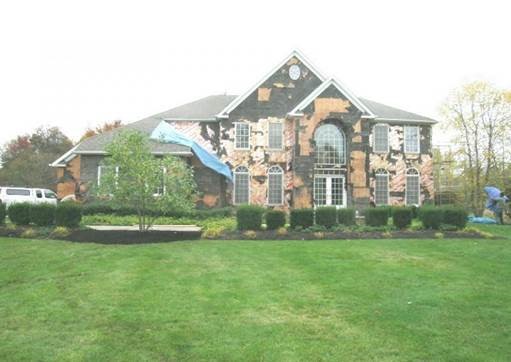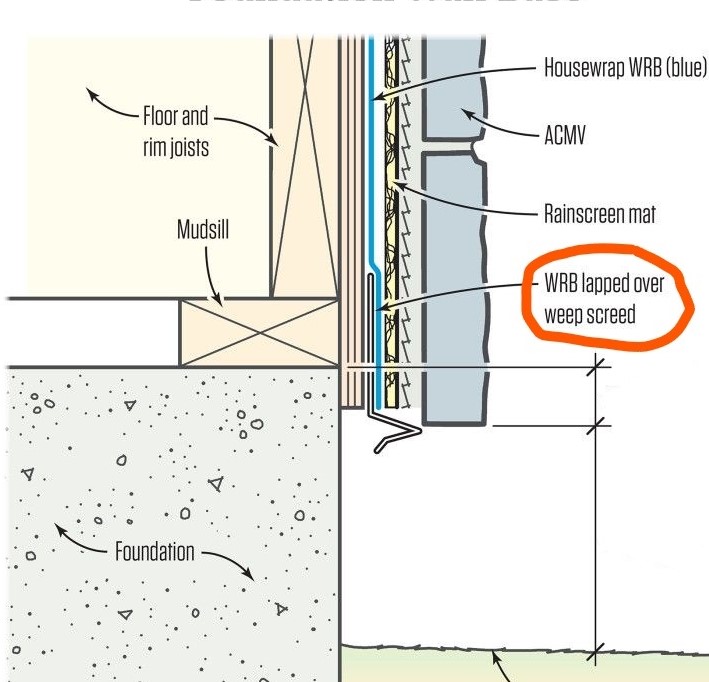
Recently, there has been an increased interest in wall rot under stucco and stone veneered homes. Homes are seeing issues with wall rot as early as ten years after construction. If you own a stucco/ veneered home, there may be a reason to be concerned. Stucco wall rot is a devastating issue in many houses in our area and around the state. Repairs of wall rot are costing homeowners thousands of dollars, lowering home values, and causing a lot of frustration.
What is Wall Rot?
The term “wall rot” refers to the disintegration of the building materials that make up the external walls of a home. In stucco homes, it occurs when moisture becomes trapped behind the stucco without a means of escape. Trapped water usually means mold, and wall rot is not far away. The walls on the exterior of the home will slowly soak in the water, and it will eat away at the wall until it shows on the outside or the inside with mold growth.Property owners notice signs such as:
- Outside walls are starting to show signs of mold, water stains and cracks.
- A musty smell around the damaged part of the house as well.
How Does Wall Rot Begin?
The cause is an improper Water-Resistant Barrier System under porous siding material like stucco, stone, and even brick veneers. The trapped water causes mold growth, and begins to cause the structural framing behind the stucco to decay. This decay includes the OSB (oriented strand board), turning it into what some inspectors call “oatmeal.” As the issue progresses, the rot spreads throughout the walls. It can continue until the 2 x 4’s that form the structure also begin to rot. This issue can also cause the insulation to become exposed and affected. Once the supporting materials of a structure begin to disintegrate and decay, the walls will lose their structural integrity and may begin to buckle. In time, the rot will eventually make its way into the interior walls, and floor joist system. Buckling and even collapse is inevitable without remediation!When properly installed, stucco allows the water to pass through where it comes against a properly designed and installed Water Resistant Barrier or WRB is drained away from structural elements. On properties where moisture has become a problem, one concern is the absence of a “weep screed” at the base of the wall that allows drainage of trapped water. A weep screed will look something like this.

Wall Rot Warning Signs
Problems typically will begin in areas where flashing and waterproof materials are not correctly installed. The area of concern is places where the roof does not extend beyond the stucco wall, or the point intersects with the stucco wall, windows, and door openings.One of the biggest red flags that there may be a stucco issue taking place is if you notice leaking in the home. Are there water stains on ceilings or walls? Check to see if staining could have been from a plumbing or other type of issue first, but if not – the leaks are most likely coming from the exterior of your home.A common area of concern is on exterior facing windows. In this area, flashing installation is incorrectly installed and allows the flow of water to seep between the cracks. Keep in mind that stucco, stone, and brick are porous and soak up water. Only a good WRBS can prevent eventual decay.Another
warning sign is when parts of the stucco have discoloration or darker spots. Discoloration could indicate that water is trapped behind that wall causing mold to grow. The discoloration of the wall signals water that is trying to escape. Additionally, stains down the walls near windows, gutters, and corners can also be an indicator.A musty smell in the home can also be an indicator and usually means mold is not far away. If you happen to be smelling something near your exterior walls but cannot find the source, it is probably on the inside.Feeling the flooring and walls around the exterior of a home can also be an indicator that a closer look is needed. Possible warning signs:
- Are the walls and flooring cool to the touch?
- Does the carpet feel damper than other sections or even cooler?
- Do hardwood floors show signs of moisture or buckling?
- Inspect exposed joists and sill plates in an unfinished basement or crawl space
Where Do You Go From Here?
If you are noticing any of the above issues, you should have a professional assessment performed as soon as possible. The unfortunate part about wall rot is the damage is behind the wall. Therefore, making it hard to catch the problem early. Often once you notice you have a problem it has most likely already progressed throughout much of the wall.If you suspect that your home is affected by wall rot, contact the team at
Thompson Building Associates. Our professionals will be able to assist you in determining if you do have a WRBS failure. If a thorough check shows that you are safe, then you do not need to worry. If evidence of problems is found, then you are already one step closer to putting a stop to the rot before it spreads further. The longer an issue exists, the worse the damage gets, and the more expensive the cost of repairs.Follow us along on Social Media to learn more about Thompson Building Associates!
Facebook Instagram YouTube  Recently, there has been an increased interest in wall rot under stucco and stone veneered homes. Homes are seeing issues with wall rot as early as ten years after construction. If you own a stucco/ veneered home, there may be a reason to be concerned. Stucco wall rot is a devastating issue in many houses in our area and around the state. Repairs of wall rot are costing homeowners thousands of dollars, lowering home values, and causing a lot of frustration.
Recently, there has been an increased interest in wall rot under stucco and stone veneered homes. Homes are seeing issues with wall rot as early as ten years after construction. If you own a stucco/ veneered home, there may be a reason to be concerned. Stucco wall rot is a devastating issue in many houses in our area and around the state. Repairs of wall rot are costing homeowners thousands of dollars, lowering home values, and causing a lot of frustration.
